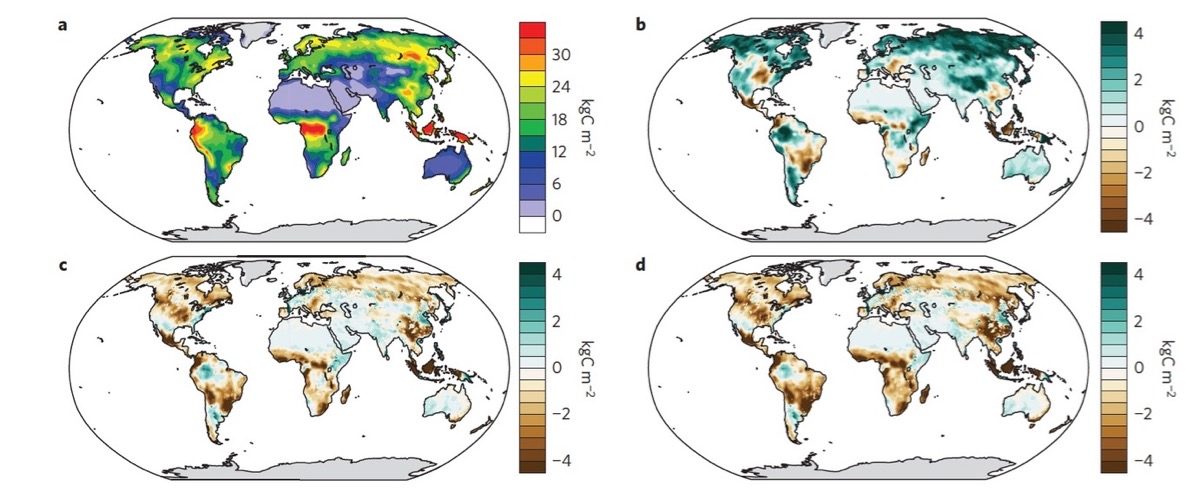About INCyTE

INCyTE was inspired by multiple lines of evidence suggesting that predicted increases in global plant growth (net primary production; NPP) in the future may be strongly limited by the availability of other essential nutrients, especially nitrogen (N) and phosphorus (P). The figure above show mean terrestrial carbon (C) storage using different assumption about nutrient limitation from multiple models. a, Mean initial terrestrial C storage for all CMIP5 models (1860-1869). b-d, Multi-model mean changes in terrestrial C storage at the end of the 21st century under RCP 8.5 assuming that increases in NPP, are limited by nothing (as in the CMIP5 archive; b) new N inputs (c), and new N and P (d). From Wieder et al., 2015, Nature Geoscience DOI: 10.1038/NGEO2413.
Several recent events led to the development of INCyTE. First, in April 2016, the International Land Model Benchmarking (ILAMB) project released its final report which highlighted nutrient cycling as a key gap in C cycle modeling (Hoffman et al. 2016). Then, in May, 2016, ~ 50 researchers gathered in Townsend, TN to participate in an NSF sponsored 3-day workshop, Phosphorus Cycling in Terrestrial Ecosystems: Taking a new approach to advancing our fundamental understanding through a model-data connection (dubbed the Awesome Phosphorus Workshop; AWP).Next, in June 2016, INCyTE team member Wang co-organized and held a workshop entitled Nutrient limitation on land:How accurate are our global land models? in Yangling, China. The goal of the latter two workshopswas to bring empiricists, experimentalists, and modelers together for the first time to discuss how to: include P cycling in global models; consider and identify gaps in our understanding of the P cycle; synthesize and integrate our current understanding of P cycle dynamics, and promote interactions between these groups to advance our knowledge through model-data integration. These previous efforts and some demonstrated the need for an RCN such as INCyTE. As a group, we felt that an RCN with a more comprehensive focus (i.e., multiple nutrients) would be more valuable than any RCN focused on any specific nutrient. Thus, our multidisciplinary team collaborated to formulate the following objectives that we will address via INCyTE:
Objective 1: Identify the most significant gaps in our understanding of nutrient cycling, nutrient limitation, and their spatially-explicit effects on the global C cycle, and develop a strategy to address those shortcomings.
Objective 2: Evaluate current ESMs, how they work, how they reconcile with ecological understanding gained from on the ground measurements, and prioritize a strategy for improvement of models and for validating model output.
Objective 3: Consider the effects of nutrient stoichiometry and interactions on C cycling, and explore ways in which the flexibility of nutrient supply and demand may work to overcome nutrient limitation, as well as how to represent these interactions in models.
Objective 4: Based on the most important knowledge gaps, interactions that regulate nutrient supply, and possible implications of stoichiometric flexibility, design a platform for a distributed, community-based set of integrated, “rapid response” lab and model-based experiments to address gaps and identify more focused research opportunities.
Objective 5: Use network syntheses and community-based experimental data to enhance model representation of nutrient cycling, interactions and how they influence C-climate interactions, and to inform a set of activities aimed at more accurately representing nutrient-C-climate interactions at large scales.
